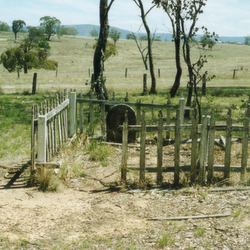 |
 |
LANDSCAPE STUDIES
Historical landscapes have been described as “open air museums”. This means that the actions of both indigenous populations and new settlers have altered the natural environment and have left traces in the landscape. The reasons for altering the landscape can be as wide-ranging as ceremonial purposes or agricultural necessity. Identifying and interpreting this evidence can help us to understand what has happened in the past, why it happened and, sometimes, even what was in the minds of those responsible for those changes. The archaeology of landscapes often includes obvious elements such as buildings and fences and dams and road but sometimes it can be faint traces such as plough lines visible from aerial photographs, levelled building platforms or an introduced species of plant. Landscape studies can also identify buried archaeological features or elements such as wells. A comprehensive landscape study can do more than identify a catalogue of sites it can provide meaning and context for a community, a property or a single item. It can also reconstruct landscapes long since lost through the actions of human intervention. Sometimes in association with specialists such as landscape architects or with full responsibility examples of our work in this area include: Rouse Hill House and Estate survey (DEP, 1988) Regional Study of Heritage Significance Central Lowlands Hunter Valley (Electricity Commission NSW 1990) Redfern Park (Clouston 1994) Cattai National Park Survey (NPWS 1983, 1996) The Warren, Marrickville (Marrickville Council 1998)
|











